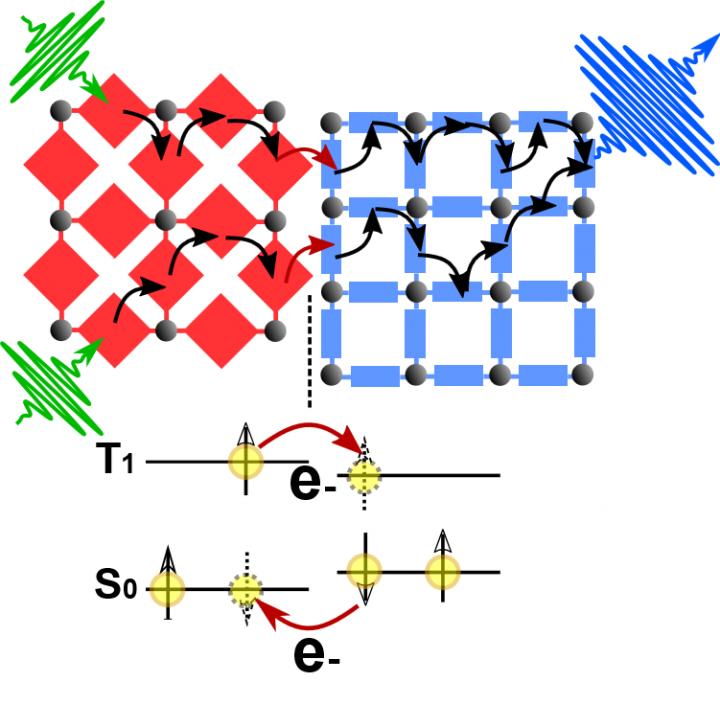Contact Person: Frivy Flex
E-mail: Frivy.Flex@iacslight.com
skype: fobfrivy@gmail.com
Add: Pengjiang Distribution, Jiangmen City, Guangdon Province, China
Led Light technology: How to Turn Green Light Blue
The upconversion of photons permits an even more efficient use of light: Two photons are converted into a single photon having higher energy. Researchers at KIT now showed for the first time the inner interfaces between surface-mounted metal-organic frameworks (SURMOFs) are suited perfectly for this specific purpose - they turned green light blue. The effect, that is now being published within the Advanced Materialsjournal, uncovers new opportunities for optoelectronic applications for example solar cells or LEDs.
Metal-organic frameworks (MOFs) are highly ordered molecular systems that incorporate metallic clusters and organic ligands. At the Institute of Functional Interfaces (IFG) of KIT, researchers developed MOFs that grow epitaxially for the surfaces of substrates. These SURMOFs (surface-mounted metal-organic frameworks) can be achieved from various materials and stay customized using different pore sizes and chemical functionalities so they are suited to a large variety of applications, e.g. for sensors, catalysts, diaphragms, in medical device technology or as intelligent storage elements.
 |
Another field of application is optoelectronics, i.e. components that are designed for converting light into electricity or vice versa. Many of these components work on the basis of semiconductors. "The SURMOFs combine the advantages of organic and anorganic semiconductors," Professor Christof W%uFFFDll, Director of IFG, explains. "They have chemical diversity and crystallinity, allowing us to make ordered heterostructures." In lots of optoelectronic components, a so-called heterojunction - it becomes an interfacing layer between two different semiconductor materials - controls the power transfer between your various excited states. Researches with the KIT Institute of Microstructure Technology (IMT) now developed a new piggyback SURMOF when a second SURMOF grew epitaxially, i.e. layer by layer, on a first. Only at that heterojunction, it was simple to achieve photon upconversion, transforming two low-energy photons in a single photon with good energy, by virtually fusing them together. "This process turns green light blue. Blue light carries a shorter wavelength and yields more energy. This will be significant for photovoltaics applications," explains Professor Bryce Richards, Director of IMT. The scientists are presenting their job in Advanced Materials, one of the top journals for materials science.
The photon upconversion process shown with the Karlsruhe researchers is based on the so-called triplet-triplet annihilation. Two molecules may take place: a sensitizer molecule that absorbs photons and produces triplet excited states, plus an emitter molecule that takes within the triplet excited states and, by utilizing triplet-triplet annihilation, sends out a photon that yields a greater energy compared to photons that have been originally absorbed. "The task was to create this process as efficiently as you can," explains Dr. Ian Howard, leader of an junior research group at IMT. "We matched the sensitizer and emitter layers you might say to get a low conversion threshold as well as a higher light efficiency simultaneously."
Because the triplet transfer will depend on the exchange of electrons, the photon upconversion process revealed by the researchers includes an electron transfer through the interface forwards and backwards SURMOFs. This implies the belief that SURMOF-SURMOF heterojunctions are compatible with many optoelectronic applications such as LEDs and solar cells. One of many limitations to the efficiency of today's solar cells is due to the fact that they'll just use photons with a certain minimum energy for electric power generation. By using upconversion, photovoltaic systems becomes far more efficient.






